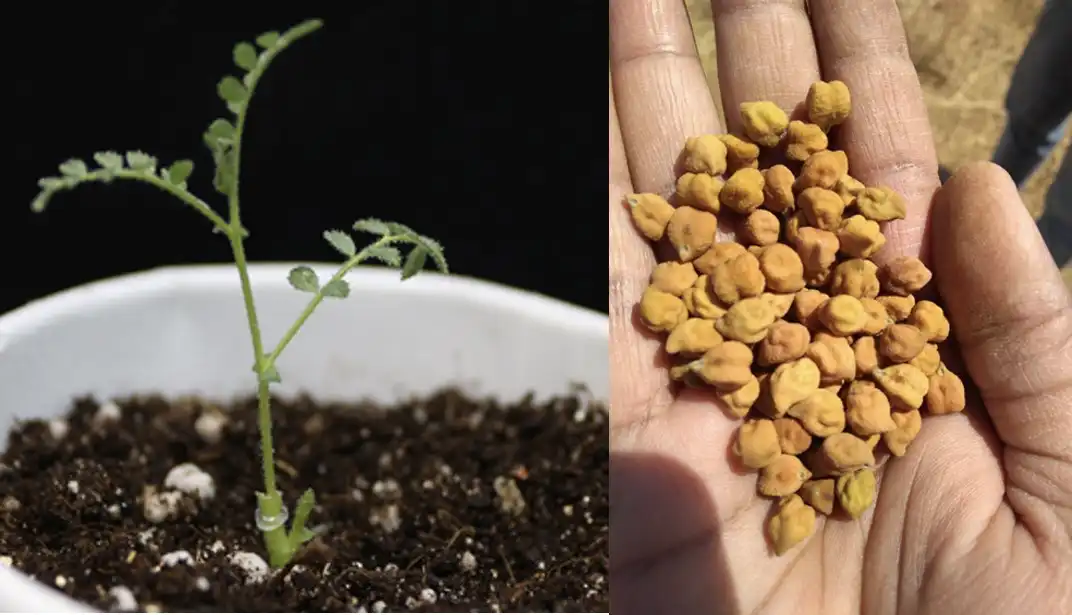Contributed by Santosh Kumar Gupta @SantoshKr_Gupta, Senior Technical Officer at the National Institute of Plant Genome Research, New Delhi, India.
A team of researchers from India’s premier plant science institute, “The National Institute of Plant Genome Research (NIPGR),” Department of Biotechnology, Govt. of India, has made significant strides in understanding how a tiny molecule, known as MicroRNA397, can play a crucial role in enhancing chickpea’s resilience against drought and dry root rot disease.
MicroRNA397 functions as a regulator, controlling the expression of specific genes called Lac4 and Lac17L, which are pivotal in the formation of lignin in chickpea roots. Lignin is an essential component that strengthens the root structure and provides defense against various stresses.
The researchers achieved this breakthrough by genetically engineering a desi chickpea variety, creating stable transgenic plants that overexpressed CamiR397 (miR397OX) and others where this molecule was inactivated biologically.
Through their comprehensive study of dicot indeterminate grain legumes, they uncovered the vital role played by MicroRNA397 in regulating lignin deposition in the roots under both abiotic (environmental) and biotic (disease-related) stress conditions.
One of the most intriguing findings of this research was the influence of miR397 on the thickness of xylem cell walls. Higher levels of lignin deposition, regulated by miR397, resulted in thicker xylem cell walls, which could potentially alter the diameter of the xylem and influence water movement, making the plant better equipped to endure drought situations.
Moreover, the study demonstrated that lignin deposition in the exodermis, the outermost layer of the root, played a crucial role in conferring resistance against root rot fungal infections caused by Macrophomina phaseolina, a significant threat responsible for 3-70% of yield losses in chickpea crops in India and beyond.
These findings are particularly exciting for crop scientists, as they shed light on the potential of strengthening the root network through altered regulation of MicroRNA397 and its target transcripts to enhance drought tolerance and resistance to dry root rot disease not only in chickpeas but also in other indeterminate legume crops.
By unraveling the intricate mechanisms of chickpea’s response to stress, this research paves the way for the development of more resilient and high-yielding crops, ultimately contributing to food security and agricultural sustainability. The implications of this breakthrough hold promise for addressing the challenges posed by climate change and ensuring a brighter future for chickpea farmers and consumers worldwide.
Read the paper: Plant Cell & Environment







